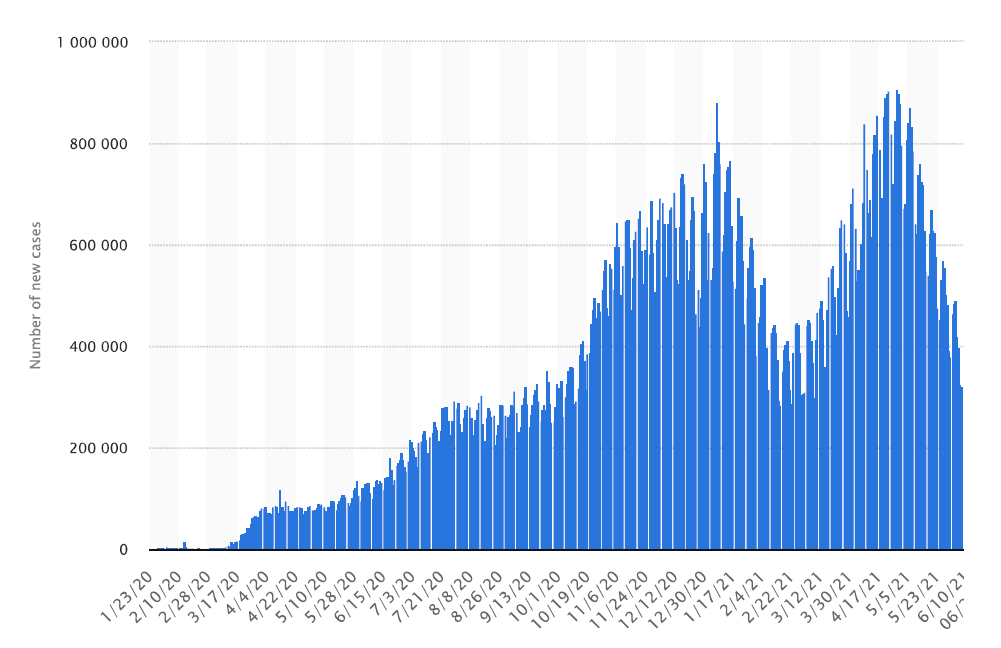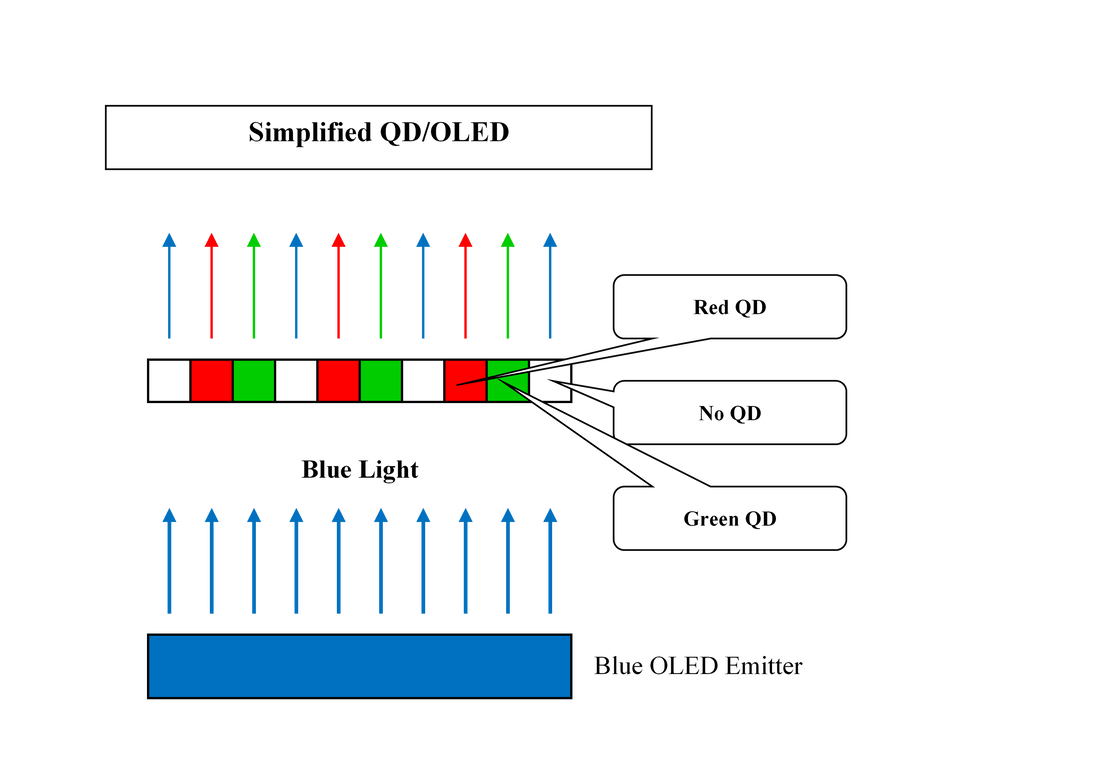Quantum Dots – Update
A secondary characteristic of quantum dots is that they produce ‘precise’ colors, essentially colors that produce light at narrow wavelengths, under 50nm wide in most cases, as opposed to OLED materials that produce similar peaks but broader bases, giving display designers the ability to tailor the color balance to very tight specifications.
There will be many variants on the structure of such panels but the theory is that the blue OLED light ‘pumps’ the quantum dots to emit their respective colors, creating a large panel RGB display without the deposition limitations that keep RGB OLED from being used for OLED TVs. In the case of SDC’s QD/OLED display, the quantum dots are patterned using an ink jet printer, with the dots being dissolved in a solvent along with wetting agents. This allows the entire substrate to be patterned without the metal masks used in small panel RGB OLED production and is extremely efficient in the use of materials., while able to create dots at intervals down to 2um, meaning there are few patterning limitations as to display resolution.
All in, the result should be a brighter overall panel that retains the high contrast of a self-emissive display and the color purity that quantum dots provide, however while this sounds relatively easy, the engineering behind such a device is complex. The TFT that drive the OLED material to emit light is different than what is typically used for LTPS or LTPO backplanes used for LCD and OLED displays, so the design of the backplane for QD/OLED was a daunting task, and while ink jet printing has been used to encapsulate OLED materials, patterning at such tight tolerances required a substantial improvement in IJP tools and considerable research in QD ink composition, which will continue as the materials and process move into mass production.
That said, after the initial release of Sony’s QD/OLED TV and the potential Samsung set, the question will be whether the public will see enough of a difference in the display to rationalize what will likely be a higher cost relative to WOLED. Initial reports from some trusted sources who have seen physical demos are quite favorable, however all the positive reviews in the world are secondary to what the buyer sees when walking into a store, and the answer to those questions will likely not be answered until later this year. There will likely be strong pre-order sentiment from sagacious technocrats, but rank and file buyers are needed to sell enough units to justify the production expansion necessary to establish the technology as a potential display modality and to support the continuation of the R&D necessary to reduce costs and make material and manufacturing improvements. More on QDs tomorrow.


 RSS Feed
RSS Feed